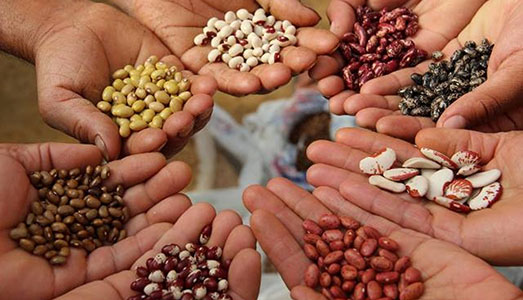From the FRIENDS of the San Juans
To promote the health and safety of people, wetlands, and fish and wildlife, FRIENDS of the San Juans has appealed the Critical Areas Ordinance update that San Juan County adopted in December 2012. While the County succeeded in completing the much-delayed task, the ultimate ordinance needs some fine-tuning to ensure that it applies Best Available Science recommendations to protect all wetlands in the County, prevent long-term harm from flood risks due to sea level rise, and ensures the long-term viability of fish spawning beaches.
“Over the years, we have advocated for a straightforward, science-based CAO. Instead, the ordinance is complex for property owners and county staff and fails to achieve adequate protection of critical areas,” said Tina Whitman, FRIENDS’ Science Director.
FRIENDS filed the appeal in an effort to stem the steady, incremental and cumulative degradation of local waters and wildlife. Eelgrass disappeared from 82 acres of embayments between 1995 and 2004. Puget Sound Chinook salmon, Southern Resident Killer Whale and sea bird populations continue to decline. Shoreline trees and shrubs that deliver insects to salmon, and tidal marshes that provide them homes, have also declined significantly over the years.
“Unfortunately, this is the next step,” stated Kyle Loring, FRIENDS’ Staff Attorney. “We see litigation as a last resort, but when seven years and several different processes result in an ordinance riddled with loopholes, like shoreline buffers as small as 30 feet from spawning beaches when other counties seek 150 feet, we feel compelled to turn to the Growth Management Hearings Board for guidance.”
In 1990, the state legislature adopted the Washington Growth Management Act (GMA) to respond to the threat of uncoordinated and unplanned growth in our rapidly developing state. The legislature included as one of the GMA’s highest priorities the direction that counties adopt, and update at regular intervals, critical areas ordinances, which must protect wetlands, fish and wildlife habitat conservation areas, frequently flooded areas, geologically hazardous areas, and critical aquifer recharge areas.
San Juan County is the second to last county in the Puget Sound to complete the state-mandated CAO Update. “Instead of applying knowledge gained during the 7 years since our update was due, San Juan County chose a path that offers far less protection for critical areas than nearby counties,” said FRIENDS’ Executive Director Stephanie Buffum.
“The Critical Areas Ordinance is our collective safety boat,” stated Buffum. “Decreasing shoreline vegetation, building in geologically hazardous or flood prone areas, sacrificing habitat, and a host of exemptions put a lot of holes in our safety boat. Left unchallenged, this boat will sink. We are not asking the Growth Board to throw out the entire update, we are asking them to patch the holes,” Buffum stated.
San Olson, President of FRIENDS’ Board of Directors, stated, “We are picking up where experts like the Washington Department of Ecology, locally-affiliated Tribes, and the County’s Marine Resources Committee left off. Each of them offered recommendations to ensure that the CAO protects critical areas, unfortunately many of their recommendations were rejected. FRIENDS’ board is concerned that if we do not challenge the CAO provisions we believe are inadequate, San Juan County would lower the bar for ourselves and those Puget Sound counties just now starting their second round of CAO updates.”
**If you are reading theOrcasonian for free, thank your fellow islanders. If you would like to support theOrcasonian CLICK HERE to set your modestly-priced, voluntary subscription. Otherwise, no worries; we’re happy to share with you.**








I’m sure that FOSJ will appeal until the reasonable and rationale use of private property is stripped from owners.
Why should taxpayers have to pay legal fees so the Friends can air their views, one more time, in court and on our dime? Can there be anything left unsaid by them after all these years of constant, unrelenting, participation in the CAO process? Enough already. Who’s paying for this lawsuit anyway? Donors?
This after both the FoSJ Executive Director and Counsel pleaded with County Council to PASS the CAO before the end of 2012.
The “Friends” haven’t issued press releases about some of their other activities:
They recently intervened and opposed the extension of a B&B permit (only two guest rooms) that would have allowed an elderly woman on San Juan to finally sell her property and retire.
They have just noticed their opposition to a family with a home on the shoreline seeking to stop erosion of their property by revising bulkheads.
The Friends appeal of the County’s new CAO to the Growth Hearings Board shouldn’t be a surprise to anyone. The Friends are a business. Their business model is to always forecast pending doom and destruction; “Our island’s ecosystem is on the brink collapse. Rising seas will sweep us all away!” The solution to the crisis …. send the Friends money to pay the salaries of the Friends Director, lawyers and staff.
No level of restrictions on private citizens will ever be enough. Their business plan would fail and the donations stop if they were ever say that things are going pretty well in San Juan County.
I expect there will be other appeals to the Growth Hearings Board against the County’s new Critical Areas Ordinance. Citizens will be pushing back against the Ordinance that the Friends were directly involved in writing. At some point people will realize the Friends and their supporters are not very friendly to anyone living in the islands.
John Evans
Doe Bay